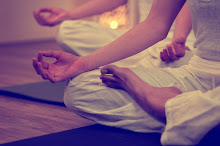The Ashtanga Vinyasa Yoga system places emphasis on the breathing and moving synchronicity first and foremost. Strength, flexibility, and stamina are developed equally through this practice.
Ashtanga Yoga benefits body, mind and spirit. It is a challenging series that purifies, strengthens, detoxifies and aligns the body, combining the benefits of Yoga and Exercise.
Classes consist of:
Breathing – Each class begins with breath awareness. We learn to feel the breath, feel the diaphragm move in our body and relax to allow the breathing process to happen naturally. During the practice of postures we practice a style of yogic breathing called Ujjayi Pranayama. (see below for more explanation).
Sun Salutes – These warm up the body and get the blood flowing. It is here that we set the rhythm and mood of our yoga session, establishing the relationship between movement and breath.
Standing Poses – These begin the opening process in the external body; develop strength and balance. Standing poses are a balance between rooting and lifting. The feet stay firmly rooted building us a strong foundation, from this base we rise and expand, lifting and lengthening into each asana (pose).
Seated Poses – The seated poses are known as yoga therapy. It is a healing process of cleansing and toning for the body, mind, and nervous system. The asanas are arranged in a time tested sequence designed specifically to detoxify the organs and make the body healthy. Many practitioners of the primary series have found it to assist in their healing process, whether it is mental or physical. Allow time for your practice to mature and the fruits will present themselves.
Relaxation – The return to stillness. In this place of stillness you will find the revitalizing and nurturing effects of the relaxation pose. Allow yourself time to absorb the energy; relish the stillness. Here is where your body relaxes and allows the toxins and tensions dislodged by the practice to be carried off and eliminated. This pose is just as important as all the other poses.
There are several elements that are unique to Ashtanga yoga and set it apart from other forms. These, although some are considered advanced yogic techniques, are important to establish early in your practice. They will help you keep your mind focused and experience yoga:
Vinyasa—movement and breathing synchronization. Moving our body in synchronization with our breath builds heat in the body while it helps calm the mind. Vinyasa keeps our practice smooth and flowing.
Ujjayi breathing. We use a specific loud breath during the practice. This type of breath helps us to utilize our diaphragm to breathe proper, steady, and deep. This relaxes the nervous system even while we work hard teaching us to remain calm even during dis-stressful times in our lives.
Bandhas or pelvic floor and abdominal stabilization. Bandha help build heat in the poses, support the spine, increase our mindfulness, and control our prana (energy). Mula bandha is akin to a kegel, a lifting of the pelvic floor muscles. Uddiyana bandha is pulling the lower abdomen inward and upward, while the upper abdomen remains soft to accommodate a full breath. These bandhas only require a fraction of your effort, creating stillness in the lower abdomen. Bandhas support good breathing and help us move effortlessly by giving us a feeling of lightness.
Drishti or gaze point. The eyes are trained to gaze softly at a particular spot. This is a method to deal with the tendencies of the mind to avoid discipline and seek stimulation through the eyes and ears. Gazing will improve the vision by exercising the eye muscles and the optic nerve, while increasing the blood flow. It also keeps the neck properly aligned in the poses, and in some poses, strengthens the neck. It is important to keep a soft gaze. Eventually this will help calm the mind
This information was written by Bobbi Misiti of BeFit Yoga. More information can be found at www.bfityoga.com.
Tuesday, September 30, 2008
Subscribe to:
Post Comments (Atom)





No comments:
Post a Comment